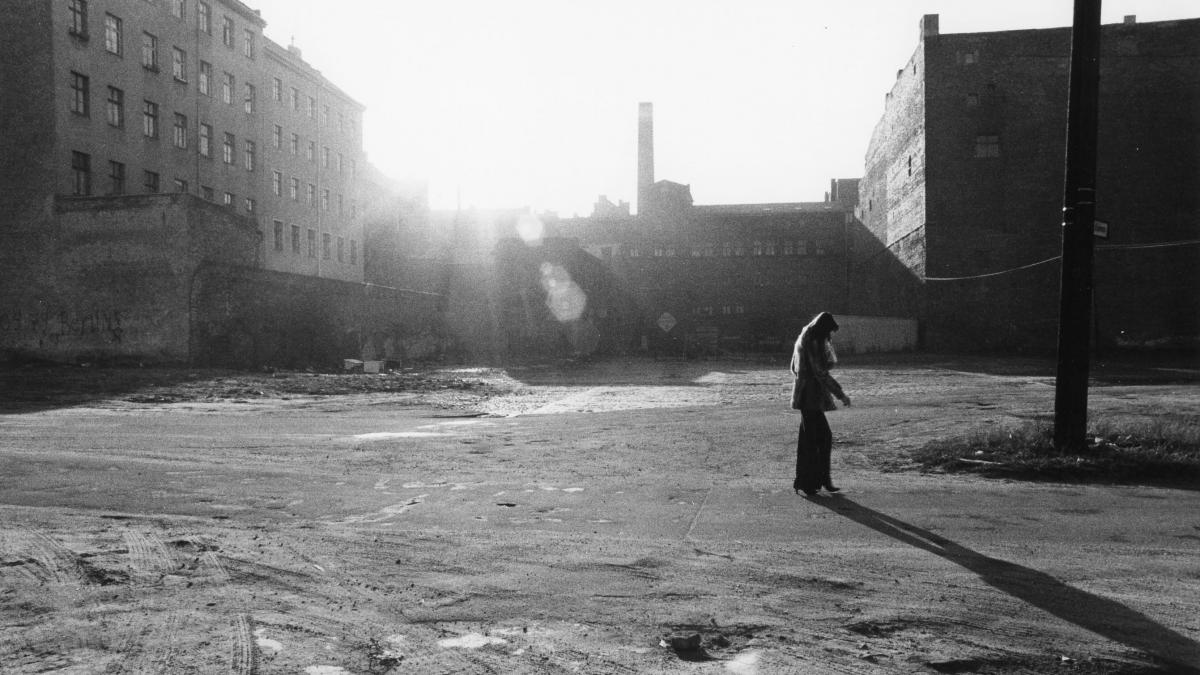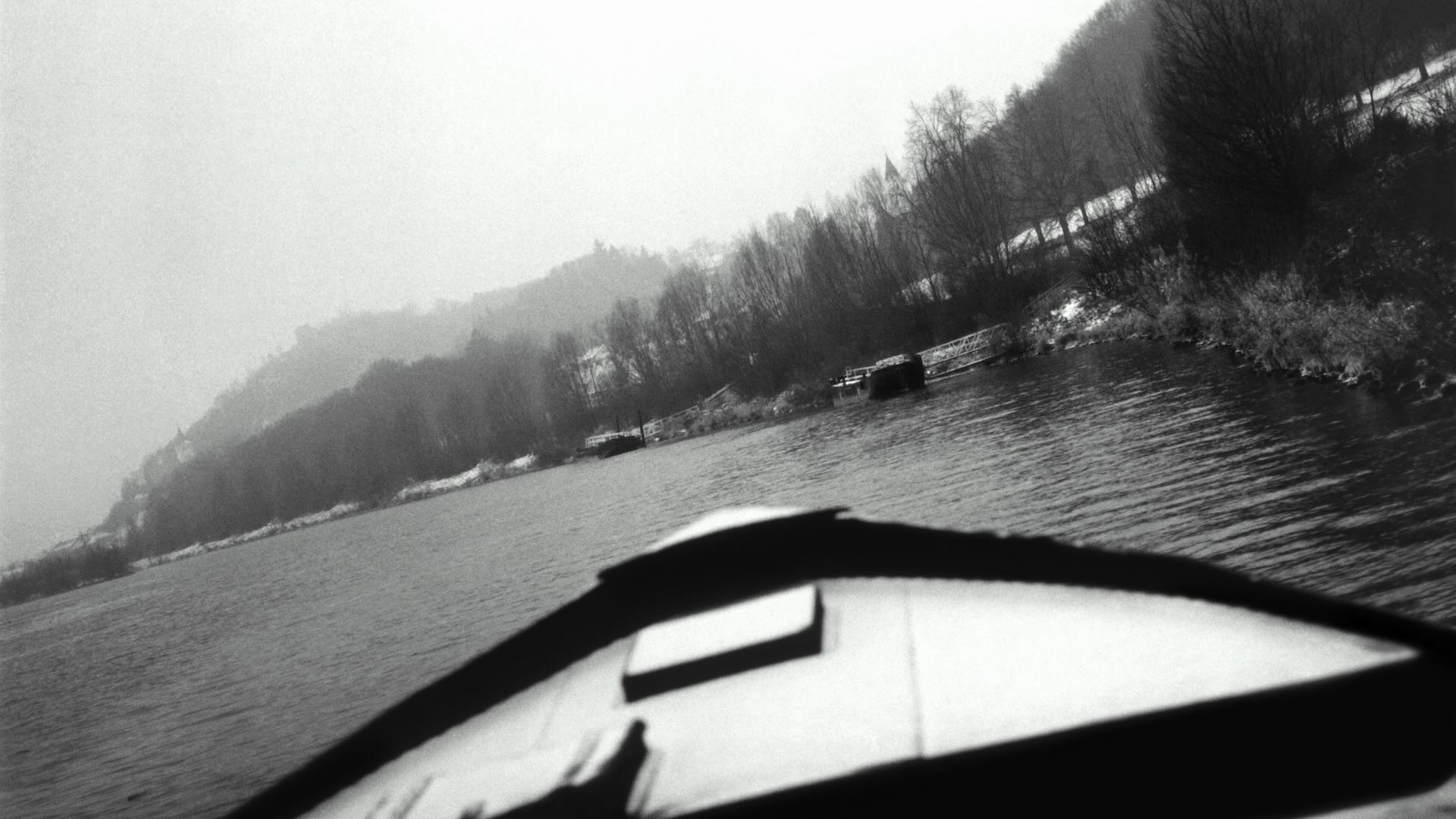Grey and cold Berlin is the setting for this meditative stroll, the encounter between a city and a filmmaker. This austere and beautiful film is meant to be watched as one reads a poem, as an entry into a world of images, sensations and reflections. Annik Leroy - a photographer - allies herself here with the experimental school, defined by Dominique Noguez as encompassing “all films governed wholly by their formal concerns”.
Shot over two consecutive winters, the film sketches the portrait of a city metaphorically frozen within the cold, the snow, emptiness and demolition. A city perceived in terms and by means of movement - the wandering of the filmmaker herself, the passing of trains, the endless stream of fractured, mutilated landscapes - the camera stopping to hold on façades, factories and walled-up houses as though they were characters, brick witnesses to the disaster. Of people we see very little, besides the anonymous silhouette of the filmmaker. They are few, and even when present appear to have stumbled onto the scene unintentionally, intrudes plucked from their own painful lives.
The soundtrack features fragmentary voice-overs by Leroy introducing her film, excerpts of scores by Mahler or Wagner, the hubbub familiar from train stations, the background noise of the city, and at times the off-screen voices of figures we never get to see discussing the catastrophe of the Hitler years or the suffering of the German people, whom history made into both executioner and victim. Yet there is also hope, expressed in the clamour of children in the playground.
“The dark passages of European history are always throbbing in Leroy’s work, starting with her first feature-length film, In der Dämmerstunde Berlin de l’aube à la nuit (1980), in which a solitary wandering through the old neighborhoods of the city of Berlin evokes a past of destruction and loss. Faceless ruins and deserted streets are the silent witnesses of a tragedy that has left a deep woundedness, one that finds resonance in fragments borrowed from the work of writers such as Gottfried Benn, Else Lasker-Schüler, Witold Gombrowicz and Peter Handke.”
Courtisane
“The feeling of finding oneself back in Berlin, a year later, to end a story. Searching for a past that no longer exists; an emotion in this city, which, the longer I walk around, increasingly resembles others, a city like any other … Bahnhof Zoo, to come back here, take the train to Paris, and start all over.”
Annik Leroy
“With this film I try to retrace my journey, my story through the ruins, neighbourhoods, and streets of Berlin. I filmed the dialogue that took place between the city and myself, the wanderings in the old neighbourhoods (Moabit, Kreuzberg, Wedding), places where you can still find most of the traces of the past, or rather what’s left of them.”
Annik Leroy




